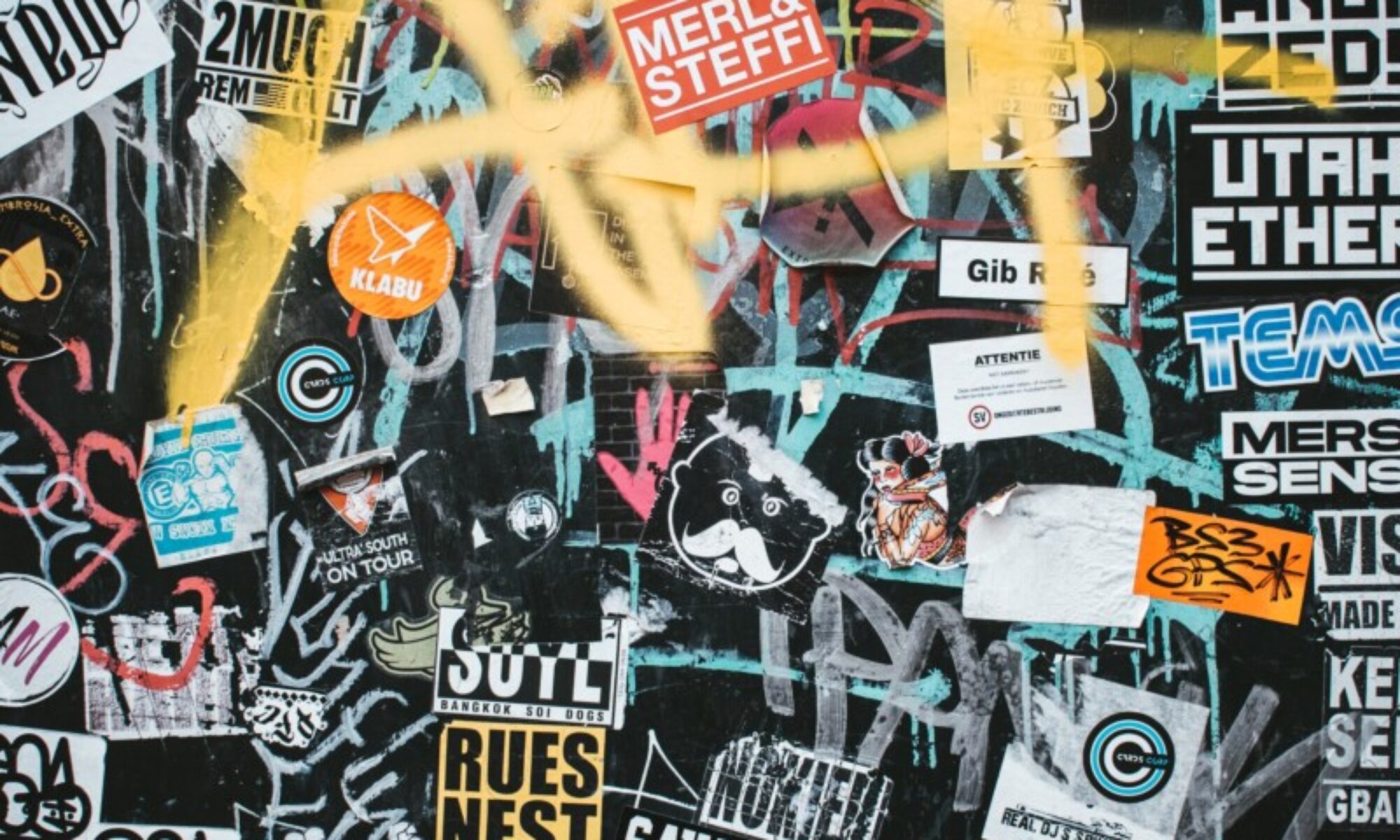This section provides an overview of postmodernism as it relates to graphic design, including concepts of Typography as Discourse and Deconstruction, and the influence of the post-modern aesthetic on visual communication.
From about 1970 to 1990, Postmodernism shattered established ideas about design and art. A brilliant mix of theatrical and theoretical, Postmodernism ranges from the colourful to the ruinous, the luxurious to the ludicrous. It is a visually thrilling multifaceted style which so famously defies definition.
V&A EXHIBITION ‘POSTMODERNISM: STYLE AND SUBVERSION 1970 – 1990
Even celebrated design leaders of the Postmodernist era have a hard time describing what the term Postmodernism means. And as we shall see, that’s kind of the point. In other sections of this OER, we used Roland Barthes’ and Stuart Hall’s Postmodern lens’ of Structuralism and Cultural Studies respectively to discover that meaning is subjective. Meaning can change depending on the viewer and each individual’s life/cultural experience.
Before we dive into Post-Modernism, let’s consider the qualities of Modernism.
Activity: Get a scrap piece of paper and pen/pencil. Take a moment to write down the qualities of Modernism that you can think of. Think back to the early avant-garde (De Stijl, Constructivists, Bauhaus, New Typography) in the early 20th Century. What were their goals and ideology with regard to Universality in form, truth, and meaning? What were they rebelling against? Consider that some of their goals were realized by the mid-1960s when the Swiss/International Style went mainstream.
By the late ’60s and early 1970s, the rebellion begins again. The Postmodernism avant-garde was a direct reaction to mainstream Modernism.
Questions
While reviewing the media and readings below, consider the following questions.
- Which elements of Modernism continued within the Postmodern era of the 1970s-1990s?
- Which elements of Postmodernism continue today?
- Are we still in the Postmodern era? If not what era are we living in now?
What is Postmodernism?
Here we look at some of the design styles seen and heard in the Postmodern era.
Activity: As you watch, write down the words that the designers use to describe this style/era and the work they produced during the 1970s-1990s.
Graphic Design History – Rejection of Modernism in the late 60s-1990s
In our reading of Steven Heller’s “Underground Mainstream”, we learned how in the late 1960s, mainstream Modernism (universality, simplicity, minimalist, structured, grid-based, corporate, design for all) was rejected in favor of the opposite (complexity, ambiguity, subjectivity, cultural pluralism, personal, experimental). This was the very beginning of Postmodernism in design. Let’s take a look back starting with the hippy counter-culture posters coming out of San Francisco in the late 60s, all the way through the 1990s anti-consumerist grunge movement in Seattle. In this broad time period with its range of styles, anything goes. The rejection of Modernist minimalism and functionalism and the embrace of personal expression, experimentation, mixed media, and styles from other time periods are the hallmarks of Postmodernism. Pay close attention to the sections on Punk and New Wave, Low-tech Seattle, and Postmodernism. These sections will be important to the Reading Response and Discussion.
Watch from Filmore 1:34:40 to Postmodernism 1:57:58 on LinkedIn Learning via your Library Card or the YouTube video below.
Punk Pop & Post Modern – Graphics of the Big 80s
This video looks at the 1980s, “the decade of shredding, remixing, tagging, overdubbing and deconstructing” and the Postmodern lineage from the late 1960s and 1970s.
Key Themes and Takeaways
Katherine McCoy challenged designers to support local cultures by practicing audience-centered design. McCoy was voicing the postmodern disillusion with universal design. “As a Modernist Swiss-school graphic designer in the late sixties,” McCoy wrote, “I knew we were going to remake the world in Helvetica.” Modernism sought a common language built on systems and modularity; in contrast, the postmodernists valorized the special idioms and dialects of cultures and subcultures.
HELEN ARMSTRONG
Katherine McCoy and David Frej “Typography as Discourse” 1988
In this essay, McCoy and Frej present the evolution of postmodern typography from New Wave / Swiss Punk Typography to the New Academy to focus on the experimental designers who “value expression over style” and where typographic design is positioned to be deconstructed using the theory of the day.
Readings and Other Media
NOTE: Unless otherwise noted a City Tech Library Card is needed to access online resources. Additional openly licensed resources will be added as they become available.
- McCoy, Katherine with David Frej. “Typography as Discourse.” in Armstrong, Helen. Graphic Design Theory: Readings From the Field, Princeton Architectural Press, 2009: 81, ProQuest Ebook Central [City Tech Library Card Required]
- Lupton, Ellen. “Deconstruction and Graphic Design: History Meets Theory.” http://www.graphicdesigntheory.net.
- Heller, Steven. “The Cult of the Ugly.” Eye No. 9, Vol. 3, 1993. https://www.eyemagazine.com/feature/article/cult-of-the-ugly



